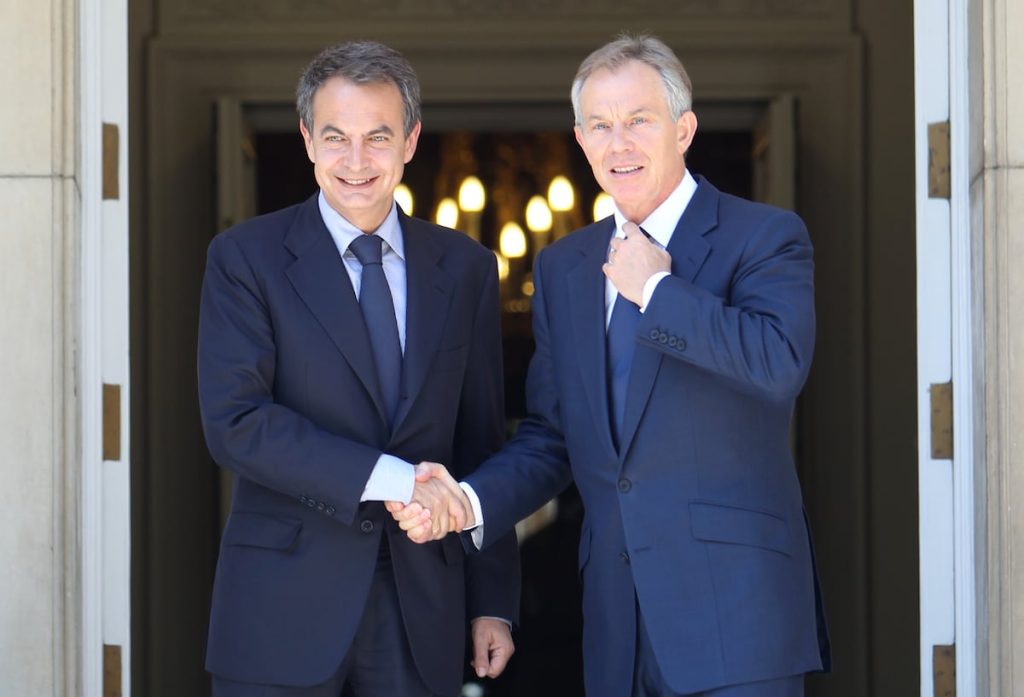Prime Minister Tony Blair mobilized Sinn Fein and the IRA to convince ETA to abandon terrorism. This is one of the revelations made by former Spanish Socialist President José Luis Rodríguez Zapatero on the 13th anniversary of the end of terrorism, highlighting the international aspect of the peace process. With the involvement of Blair, Sinn Fein, and the IRA, ETA eventually ceased its violence in 2011. The IRA’s influence over ETA played a significant role, especially after the IRA renounced violence in 2005, leaving ETA as the only active terrorist organization in Europe, increasingly criticized and weakened by its own members.
Zapatero also acknowledges the contribution of international actors and countries in the peace process. He highlights the role played by regimes in Cuba, Colombia, and Venezuela, encouraged by Spain’s Minister of Foreign Affairs, Miguel Angel Moratinos, in convincing ETA members residing in their territories to abandon violence. Additionally, France, where many ETA members resided, played a dual role under the coordination of then-Interior Minister Alfredo Pérez Rubalcaba, by detaining active terrorists while facilitating the movements of those working towards peace. The involvement of international facilitators and countries was crucial for the eventual end of terrorism.
The Center for Humanitarian Dialogue (CHD) in Geneva, financed by the Swiss and Norwegian governments, played a crucial role in facilitating communication between the Spanish government and ETA. Following the formal dialogue failure in 2007, two CHD officials maintained indirect contact between the government, the Basque left, and ETA at Zapatero’s request. This decision was pivotal in revitalizing internal debate within ETA and the Basque left about the path towards peace alongside continuous police action to weaken radical elements within the organization.
The international dimension of the peace process was further reinforced by the involvement of countries such as Cuba, Colombia, and Venezuela in persuading ETA members to abandon violence. The role of the CHD in Geneva, supported by the Swiss and Norwegian governments, in facilitating communication between the government and ETA, was instrumental in maintaining dialogue during critical moments. The coordination between international actors, countries, and the Spanish government was crucial in putting an end to ETA’s violence and achieving a peaceful resolution.
Zapatero emphasizes that ETA’s decision to end violence in 2011 was unilateral and unconditional, marking a clean and definitive conclusion to decades of terrorism. The decision was supported by international validation, including the Aiete Conference led by Kofi Annan, and achieved unity within the Basque nationalist movement. The legalization of Bildu, the new political entity representing the Basque left, after renouncing terrorism in its statutes, was a significant component in the final steps towards peace. Zapatero dismisses speculations about secret agreements and asserts that no concessions were made, with even opposition leaders recognizing the legitimacy of ETA’s ceasefire.
The peaceful resolution of the conflict was a result of the combined efforts of international actors, countries, and the Spanish government, culminating in ETA’s decision to renounce violence. The role of influential figures like Tony Blair, facilitators like the CHD, and diplomatic efforts by various countries played a crucial role in convincing ETA to abandon terrorism. Through coordinated actions, dialogue, and pressure on ETA’s leadership, the peace process achieved a definitive end to terrorism, marking a historic milestone in the fight against violent extremism in Europe.















